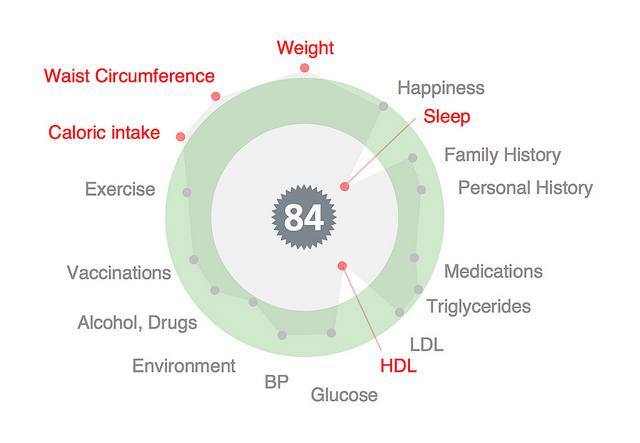

Part of today’s complexity in healthcare stems from the way our healthcare IT systems have emerged. There are multiple entry points for patients into the healthcare system, from a relationship with a primary care physician to the sporadic, disconnected and random interaction with emergency departments, urgent care and wellness clinics.
Based on current technology and the overall nature of the beast, it is highly doubtful that a single point of entry into the healthcare delivery system will ever occur and is actually less important than the quality and cost of the care delivered. The key is the understanding of how patients’ data flows through healthcare IT systems and building an infrastructure that optimizes that flow of data and information.
Widespread implementation of electronic health records, institutional or personal, was initially believed to connect the various interacting providers and patients in the healthcare web. However, it was quickly realized that EHR’s alone would not be able to collect and store health data while at the same time establishing a pipeline through which this data would flow between all stakeholders, including patients.
Small-scale solutions have been developed to this end, such as patient portals and local networks that enable healthcare professionals to access patient data, but scaling these solutions has so far presented insurmountable challenges. However, savvy healthcare IT consultants can take these challenges and turn them into opportunities. The solutions are out there. Consultants need to think like a CEO, but act like a CIO and help solve the problem.
The Missing Healthcare IT System Link
To analyze this problem, we need to understand the concept of a data information pipeline and why a pipeline through which all data flows is critical to impacting healthcare delivery quality, efficiency and engagement of patients and professionals. A data pipeline defines the series of steps through which all data flows, ultimately to the end database where the information is stored, yet it remains the missing link in healthcare IT systems.
As data and patient information flows through a well defined pipeline, we gain a great deal of potential data synergy that is not possible with current databases. This pipeline also becomes more efficient and dynamic when it carries the flow of data already stored in a database. Data flowing through a pipeline can be cleaned, transformed, merged, and processed through regional or global models and used for alerting and messaging patients or professionals in a near real-time fashion.
Yet many hospital systems still try and complete the same processes with data that has been stored in a database, encountering a laborious, error-prone, and costly endeavor. Some of these processes even become impossible when data is stored in disparate, disconnected or distributed databases. This problem continues to be the bane of healthcare IT delivery in many facilities.
Defining Robust Data Pipelines
Meanwhile, the technology changing healthcare and Meaningful Use Requirements, pressure from insurers and the impact of forward thinking physicians, hospitals and health systems are beginning to define robust data pipelines. Tools are being embraced and introduced that enable automation and access, and message insights that are gained as data flows within and between EHR’s. Designing, implementing and continually assessing processes which depend on individual patient data as well as aggregated data from patient populations are increasingly becoming necessary requirements.
But how do you build a data pipeline? How does all of this work? There are so many competing technologies, data formats, strategies and disconnected systems that building a standardized pipeline seems unattainable. A single, one-size fit all pipeline is not likely in such a complex environment, however, integrating a platform that monitors and directs data traffic can attain these ends. We know that powerful integration tools can be built on top of a data pipeline that addresses the issues we face in the clinical, quality, financial and administrative facets of healthcare delivery, if access to the data stream is possible.
Middleware Integrates Data
Smart hospitals recognize the need for technologies such as middleware, software that sits within and can direct the flow of data, addressing the missing component in the pipeline. Middleware, has been used for years to integrate data in financial and retail organizations with its simple open technology that connect EHRs.
By ingesting the data flowing into and between health information databases, near real-time understanding, communication and processing becomes possible, adding value to a currently passive stream of data. The value of the data does not come from the sheer volume, but instead from the ability to impact currently inefficient processes. Value is also created by building novel solutions and insights into the data and to alert or message those providers who can act on the information to improve quality and increase engagement of patients and healthcare professionals.
We are sitting on the edge of great potential in healthcare, if we are able to harness the power of the data currently flowing into the complex healthcare delivery system. To reach this end, we need to look beyond the ends of the data spectrum, the collection and storage. The real potential comes from the flow of data and meaning. Value and improvements in the delivery of care becomes realized when we tap into the flow data. To improve healthcare by leveraging technology, we need to create more value than we capture. Measurement of the insights we gain and transmit is far more important to enhancing care delivery and impacting our ailing healthcare system.
Dr. Donald Voltz is a board-certified anesthesiologist, researcher, medical educator, and entrepreneur. With more than 15 years of experience in healthcare, Dr. Voltz has been involved with many facets of medicine. He has performed basic science and clinical research and has experience in the translation of ideas into viable medical systems and devices.
Opinions expressed by HIT Consultant Contributors are their own.
Featured image credit: juhansonin via cc
